

At JSW Steel, we act as responsible green stewards, with prudent use of natural capital as inputs and minimal footprint as the outcome. We have in place a dedicated Environmental Management System (EMS) to help achieve this.
We are taking mindful steps to decarbonise our operations and reduce carbon dioxide (CO2) emissions across the board. We pursue circularity in mission mode, thus striving to become a part of the solution. Our innovation spectrum across water stewardship has been well-recognised and we continue to manage wastes and by-products efficiently. We also map diligently our dust and air emissions to ensure the well-being of the communities living in and around our impact zones.
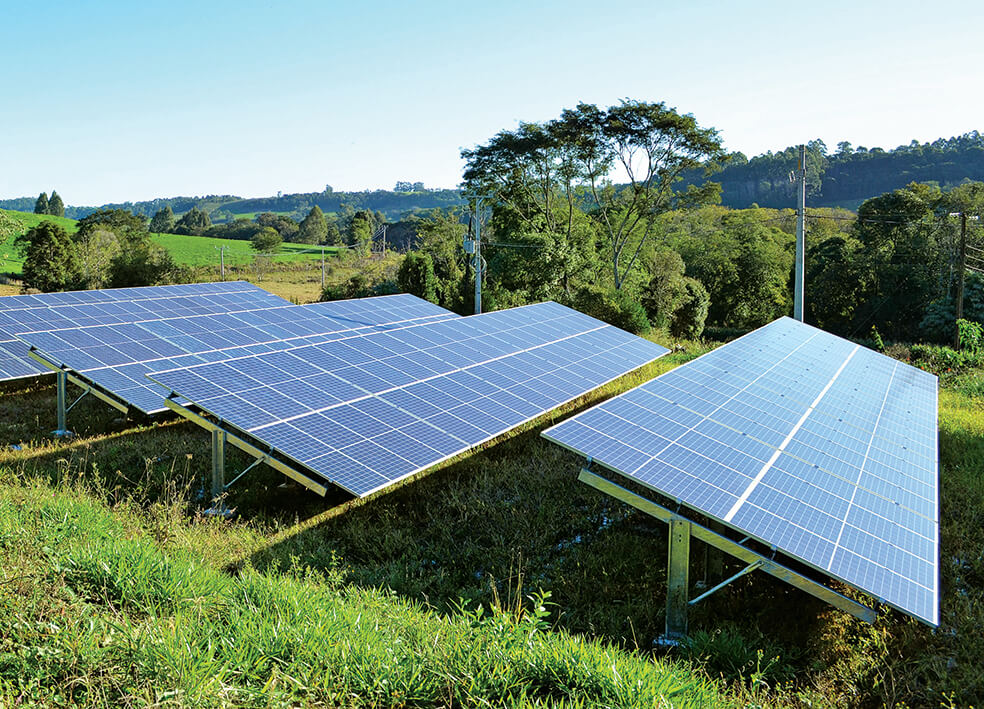
| Focus areas | KPIs | Unit | FY 2020-21 | FY 2019-20 | FY 2018-19 |
|---|---|---|---|---|---|
| Climate change | Emissions (Scope 1 and 2) | ‘000 tCO2 | 37,523.07 | 40,522.31 | 45,848.31 |
| GHG emission intensity (Scope 1 and 2) | tCO2/tcs | 2.49 | 2.52 | 2.75 | |
| Energy | Specific energy consumption | GJ/tonne | 26.69 | 27.47 | 26.14 |
| Energy consumption within the organisation | million GJ | 402.55 | 441.15 | 436.3 | |
| Resources | Specific iron ore consumption | t/tcs | 1.68 | 1.59 | 1.57 |
| Specific coal consumption | t/tcs | 0.69 | 0.73 | 0.55 | |
| Water resources | Specific freshwater consumption* | kL/tcs | 2.41 | 2.60 | N/A |
| Waste*** | Non-hazardous waste generated | '000 tonne | 11,968.06** | 14,650.8 | 13,616.75 |
| Hazardous waste generated | '000 tonne | 84.57 | 118.27 | 129.72 | |
| Waste recycled | % | 92.67 | - | - | |
| Waste water | Wastewater recycled | '000 kL | 16,050 | 16,313 | 19,161 |
| Air emissions | Particulate matter | kg/tcs | 0.48* | 0.98 | 0.94 |
| SOx | kg/tcs | 2.05 | 1.88 | 1.74 | |
| NOx | kg/tcs | 1.52 | 1.36 | 1.29 | |
| Biodiversity | Mangroves planted | Nos. | 1,50,000 | 3,49,970 | 3,06,942 |
*for steelmaking process
**excluding tailings
*** Non-hazardous waste disposed – 11,897.31 ('000 tonne) and hazardous waste disposed – 86.62 ('000 tonne)

Climate change is one of the biggest perils humanity faces today. But even more disturbing is the lack or sluggishness of climate action to get rid of the peril. To remain well below 1.5o C temperature rise compared to pre-industrial level, the world has to halve its carbon emissions by 2030. There has to be a sense of greater urgency among nations, businesses and institutions.
The carbon footprint of the steel industry is significant, with ~7% of annual global emissions. Hence, it’s imperative that the industry accelerates its transition towards a carbon-neutral scenario, with set targets and strong actions. Global players in steel consumer industries such as automobiles have already announced decarbonisation of their value chains, indicating demand for greener steel.
Globally steelmakers have recognised this fact and are actively pursuing decarbonisation. Further, steel is now being increasingly seen as a part of the solution. This is owing to the inherently sustainable nature of the material with near-infinite recyclability, which constantly reduces dependence on fresh withdrawal of natural resources.
In India, the 2017 Steel Policy included specific reduction of GHG emissions in the iron and steel sector to a level of 2.2–2.4 tonnes per tonne of crude steel in the BF-BOF route and 2.6–2.7 tonnes per tonne of crude steel in the DRI-EAF route by 2030. This is aligned to India’s Intended Nationally Determined Contributions (INDCs) post COP 21 and Paris Agreement.
Even as India strives to increase production and consumption of steel manifold by 2030, steelmakers in the country will need to significantly reduce their per tonne carbon emissions. As one of India’s largest steelmakers, JSW Steel has proactively committed to significantly reducing its carbon emissions and intensity. We have set a clear target for decarbonisation, have a dedicated climate change policy and have instituted a Climate Action Group to drive the organisation’s climate action agenda.

Hydrogen is increasingly being considered as a viable and climate-friendly fuel alternative to carbon. Shifting to a hydrogen-based economy accelerates the possibilities that come with global energy transition and significant decarbonisation. The India H2 Alliance (IH2A) is a consortium working in support of mainstreaming hydrogen as the fuel of the future. A collaboration of global and Indian companies, research and academic institutions and development organisations have come together to scale and build economies through hydrogen, and enable a robust and cost-efficient supply chain for the environment-friendly fuel.
In June 2021, JSW Steel became a key member in the IH2A and we were entrusted with the responsibility of bringing industry majors and the government on a shared platform for hydrogen commercialisation in the steel and cement sectors. We believe that this is an opportunity for us to play a huge role in India’s energy transition and contribute to national and global climate action goals.

JSW Group is uniquely placed to lead on the green hydrogen subject as we have significant interests in steel, cement, and renewable energy. As the IH2A Work Group Lead for Steel and Cement, we will bring other industry majors and the government together to build consensus for a common path towards hydrogen commercialisation in the steel and cement sectors. Green steel as hydrogen product exports can be a national strategy for cementing our position in the global hydrogen value chain and embedding hydrogen in the industrial supply chain. In every way, it is an opportunity to take the lead.

Chief Sustainability Officer, JSW Group.
At JSW Steel, our decarbonisation strategy is augmented by engagements with leading initiatives such as Net Zero Steel Pathway Methodology Project, Assessment of Low-Carbon Transition (ACT), worldsteel's STEP-UP Programme and Net-Zero Steel Initiative.
Further, we are actively engaging with technology companies, academia, companies from other sectors having similar challenges on development and scale-up of deep decarbonisation technologies such as CCUS, hydrogen generation and its use in steelmaking, use of biomass and other alternate ironmaking routes.
For example, we have signed an agreement with Shell India Markets Private Limited to evaluate and co-develop short- and long-term options for:
We are also collaborating with Larsen and Toubro Limited to explore and evaluate various Carbon Capture Utilisation and Storage (CCUS) technologies and their applications.

Steel industries around the world are being plagued with the growing challenge of reducing carbon emissions. Environment management is given precedence in JSW Steel and in addressing the issue of reducing carbon emissions we implemented the CCUS technology.
The JSW plant at Salav, Maharashtra is based on HYL III technology from HYLSA, Mexico and is operating across two independent sections, generating the reducing gas and reducing iron oxides. This technology enables us to capture carbon dioxide from the source, use it as a resource, and create valuable products or services.
Commencing with the capture of generated CO2, the process then undergoes purification and compression to form an easy-to-transport product, which can be used as a raw material in other industrial processes, such as in the Food and Beverage industry.
CCUS is an emerging technology which is rapidly gaining popularity. It is expected to mature in 2030, according to the International Energy Agency (IEA). JSW Steel has adopted this technology at a very early stage which gives us a head-start in carbon sequestration. Further, we plan to scale up the utility of CCUS in conjunction with carbon-based technology such as BF-BOF in our operations.
At JSW Steel, our Climate Change Policy commits to preventing the causes of climate change; mitigating and adapting to the impacts and building overall resilience. We have also formed a Climate Action Group (CAG) with representatives from different functions and facilitated by the Corporate Sustainability team. CAG operates as a central think tank, to formulate and drive the climate change mitigation strategy and actions for JSW Steel towards a low-carbon pathway.
In December 2020, we joined hands with 24 other leading private sector enterprises at the India CEO Forum on Climate Change to pledge collective and individual action towards combating climate change.
CDP has identified JSW Steel as a leader in emissions control, value-chain engagement, business strategy and financial planning, risk management processes, risk and opportunity disclosures and governance. We have improved our position to A- from B, thus being placed within the leadership category of CDP, which recognises the best practices we are implementing. We are among the top 23% of companies globally that have achieved the Leadership Level within the Metal Smelting, Refining and Forming industry. At a comparative level, we have performed better than the global average (C), Asia regional average (D), and the overall sector average (D).
Reflecting our sense of responsibility, we have made Environmental Product Declarations (EPDs) for our Hot Rolled Coils and Cold Rolled Closed Annealed products, and have completed life-cycle assessment for 14 final products. We have obtained the GreenPro Eco-label certification for TMT rebars (JSW Neosteel) by CII under the aegis of Global Eco-labelling network. All our rebar making facilities are covered under GreenPro, across all grades. Through this, we aim to communicate the environmental impact of our products transparently to all our stakeholders.
Recently, we also entered into a strategic alliance with JFE Steel Corporation (Japan) to set up a grain oriented electrical steel sheet manufacturing and sales joint venture company in India. Primarily used in electrical transformers, this is aligned to the rising adoption of renewable energy and mainstream electrification of vehicles. We are also indirectly contributing to reduced automobile emissions by catering to the light-weighting of auto parts.
Note: 47.7 kg CFC11e of emissions are of ozone-depleting substances.
| Interventions | Outcomes | ||||||||||
|---|---|---|---|---|---|---|---|---|---|---|---|
| Vijayanagar | |||||||||||
| Installation of waste gas recovery at sinter plant 4 | Fuel savings of up to 4.5kg/t sinter | ||||||||||
| Dolvi | |||||||||||
| Usage of by-product gas (COG) in SIP up to 10,000 Nm3/hr | Reduction in purchased fuel (NG) consumption upto 4800 Nm3/hr | ||||||||||
| Coke Oven 1 boiler capacity enhancement by optimising air-fuel ratio | Reduction in fuel consumption for steam generation and meeting the shortfall in steam requirement | ||||||||||
| TRT power generation increased by 22.5% from 8.03 MW in FY 2019-20 to 9.84 MW | Reduction in purchased power requirement leading to emissions reduction | ||||||||||
| Reduction in solid fuel heat rate in sinter plant by optimising use of recycled material | Increase in energy efficiency from 0.514 GCal/tp* in FY 2019-20 to 0.495 GCal/tp | ||||||||||
| Salem | |||||||||||
| Introduced highly efficient molecular sieves in ASP for air purification (such as removal of moisture etc.) | Reduction in regeneration temperature from 200°C to 160°C. resulted in reduction of GHG emission of 292 tonnes per annum | ||||||||||
| Auto adjustment of vacuum set point in CPP#2 unit-III-air cooled condenser | Reduction of specific steam consumption leading to the reduction of GHG emission of 535 tonnes per annum | ||||||||||
| Installation of VFD in coke oven wet quenching water recirculation pump | Speed optimisation (1,485 rpm to 900rpm) in VFD resulted in reduction of GHG emission of a ~30 tonnes per annum | ||||||||||
| Maximisation of waste heat utilisation from CO through draft control | Increase in steam generation from WHR Boiler from 136 TPH to 142 TPH resulting in energy saving of 42,100 GCal per annum, with the GHG avoidance of 10,400 tonnes per annum | ||||||||||
| Mines | |||||||||||
| Bamboo plantation | Enabling scaled and natural carbon capture | ||||||||||
| Preference for conveyor transportation over road | Savings in fossil fuel and energy | ||||||||||
*tp: tonne of product
We also measure and monitor Scope 3 GHG emissions. Observing Scope 3 emissions helps us monitor overall GHG impact across our supply chain. During the reporting period, we had a credit of about 1.05 million tCO2e as per the guidance of the World Steel Association.
The purchased goods and services, inbound, outbound, waste transportation, employee commute and business travel considering all three ISPs contributed to about 1.05 million tCO2e emissions. Estimation of emissions was carried out on the basis of guidance provided in the GHG protocol.


In light of JSW Steel’s goal of transitioning to a greener and more climate resilient business, we have adopted the Task Force on Climate-related Financial Disclosures (TCFD) framework and are working towards alignment with its recommendations. The Company is a signatory to the TCFD for climate change and in the process to fully identify the transition risks and opportunities to decarbonise its operations over a period of time.
In this regard, our Board members and senior management take an active role in defining and steering the Company's climate actions. Every level of our governance structure participates in assessing the risks and opportunities that climate change poses to the Company.
At the Board level, the Business Responsibility and Reporting Committee and the Risk Management Committee are primarily responsible for reviewing climate-related risks and opportunities during their biannual meetings. These committees have open channels of communication with each other allowing them to collaborate as and when necessary.
Some of the key climatic themes that were covered by the committees over the course of FY 2020-21 included our climate-related policies, COVID-19 impact on emissions, the 10-year low carbon and sustainable development roadmap, and harnessing of rooftop solar power generation potential.
The executive committee members, comprising of Joint Managing Director and Group CFO, Deputy Managing Director, Director (Commercial and Marketing), Head of Plants along with their direct reportees, supported by Chief Sustainability Officer, are responsible for closely reviewing and governing climate-related matters on a month-on-month basis.
The CAG is our central think tank responsible for driving JSW Steel’s climate change agenda, ensuring unified climate actions across the Company. The Group consists of experts from various corporate functions along with significant representation from operations. The CAG, which convenes on a monthly basis, is responsible for monitoring and directing the our climate change performance, assessing climate-related risks and opportunities and designing relevant risk mitigation strategies. The CAG and directly reports to the executive committee as well as the Board.
In addition to strengthening our climate change governance framework, we have introduced Internal Carbon Price (ICP) based on shadow pricing approach. The ICP arrived at US$20/tCO2e is being integrated into business decisions. Further, we have developed our 2030 Low Carbon and Sustainable Development Roadmap to serve as a guidepost in our low-carbon growth journey. This roadmap establishes company-wide sustainable development targets till 2030 as well as the strategies and measures that will be implemented to achieve these targets.
Apart from making changes in our policy framework, we continuously evaluate our risk and opportunity portfolio on a regular basis. In this regard, we have presented below a handful of risks and opportunities that we believe are currently essential to our low carbon journey showcasing considerations key to our decarbonisation and wider climate agenda. These are discussed below.
Physical risks resulting from climate change can be event-driven (acute) or longer-term shifts (chronic) in climate patterns.
Water unavailability leading to significant operational impacts to our plants located in regions with high water stress.
Extreme climatic events leading to operational shutdowns and/or service disruptions, unstable raw material procurement.
Taking cognisance of these risks, we are taking multiple measures to increase the resilience of our operations, starting with increased monitoring of weather patterns (especially rainfall patterns) to understand the likelihood of these risks occurring in the near term. We have focused on diversifying our raw material sources – which is demonstrated by our progress on backward integration for iron ore reserves. Furthermore, we emphasise on material efficiency improvement to reduce consumption of virgin raw material the iron ore beneficiation plant in Vijayanagar Steel Works is a testimony. We have also adopted a range of measures for water security for us as well as the communities in and around us that includes improving water consumption efficiency, increased recycling of treated waste water to reduce fresh water intake, selection of advanced water treatment technologies, sustained Zero Liquid Discharge (ZLD) from the plants and also rainwater harvesting, integrated watershed management projects beyond the fence.
Transitioning to a lower-carbon economy may entail extensive policy, legal, technology, and market changes to address mitigation and adaptation requirements related to climate change.
Increasingly stricter environmental laws and regulations such as the Renewable Energy Certificate (REC) mechanism, the Perform, Achieve, and Trade (PAT) mechanism, Steel Scrap Recycling Policy 2019, environmental standards for reducing air and water pollution as well as waste management policies urging recycling and circularity, the impending carbon tax on exported basic materials to be imposed under EU’s Carbon Border Adjustment Mechanism (CBAM) – altogether potentially increasing the cost of production and lower profit margins.
Change in consumer preferences with increasing demand for low-carbon products compounded by increased competition from substitute materials such as aluminium and cement that offer lower emissions during their use phase thus helping consumers decrease their footprints.
Financial non-viability of capital intensive low-carbon technologies for the ‘hard-to-abate’ sector in the near to medium-term along with technology lock-in leading to stranded assets due to over investment in high-carbon technologies driven by fossil fuels such as coal in the long term.
Adverse impacts of our business decisions on our social licence to operate which is intrinsically tied to our contributions towards the well-being of the wider community and environment affecting our standing with our investors as well as society at large.
As an organisation that prides itself as a forward thinker and leader in innovation, we have taken heed of these likely changes in the near term, and have combined our emission reduction initiatives with increased efforts in internal R&D measures aimed at decreasing our product’s life cycle carbon footprint (e.g. piloting the use of hydrogen and CCU in our operations – the successful implementation of CCU at Salav works is a testimony of our commitment). We have also taken various initiatives to improve our resource use efficiency throughout our operations (e.g. recovery of waste energy, beneficiation of iron ore, use of natural gas in place of coke). Additionally, we are collaborating with academia and other companies for technologies for ultra low carbon steel making. Furthermore, our ICP of US$20/tCO2e will allow us to adopt a balanced view of the feasibility of any proposed low-carbon projects in the near and medium term, ensuring that we continue on our low arbon journey without losing our competitive edge.
Efforts to mitigate and adapt to climate change also produce opportunities for organisations, for example, through resource efficiency and cost savings, the adoption of low-emission energy sources, the development of new products and services, access to new markets, and building resilience along the supply chain.
While climate change presents multiple challenges, it also offers a number of opportunities that the industry can take advantage of. With increasing need for infrastructure to support the global low carbon agenda, whether it’s in the installation of solar and wind power plants or in the deployment of EVs across the globe, steel, particularly low carbon steel will play a major role in establishing the foundations of decarbonisation. Furthermore, increasing policy and regulatory push towards low-carbon growth creates advantage for our ongoing innovation in products (as clearly demonstrated by our growing portfolio in high-performance steel materials that help save energy when customers use them), pressing needs such as increased use of scrap and ultra low carbon technologies like hydrogen and CCUS that can have a positive impact on our life cycle environmental footprint, financial health while maintaining our product quality. While we recognise that not all of these measures are viable today (e.g. India has a very limited scrap market making it expensive to source the raw material required when compared to virgin stock while CCU technology is currently financially non-viable at any relevant scale), we are continuously monitoring the landscape to ensure that we do not miss the bus on any of these opportunities as and when they do turn the corner.
We are also cognisant of the fact that a number of our processes and strategies are disaggregated across our various operations. The establishment of the CAG and the development of our 2030 Low Carbon and Sustainable Development Roadmap are but preambles to our endeavour towards developing a singular, holistic platform governing our ecarbonisation journey. However, to further align with TCFD’s framework, we are conducting a detailed forward-looking, scenario-based climate risk and opportunity assessment exercise to further analyse and understand the long-term impacts of these (and any additional) risks and opportunities We intend to utilise the outputs of this study to further enrich our Low Carbon and Sustainable Development Roadmap, helping us align our strategies with the goals of the Paris Agreement. The outcome of this study, to be published later, will be utilised to strengthen our future financial planning, including decisions on capital planning and allocations, operating costs, R&D investments, possible revenue streams, as well as acquisitions and/or divestments to drive decarbonisation and low-carbon growth throughout the organisation.
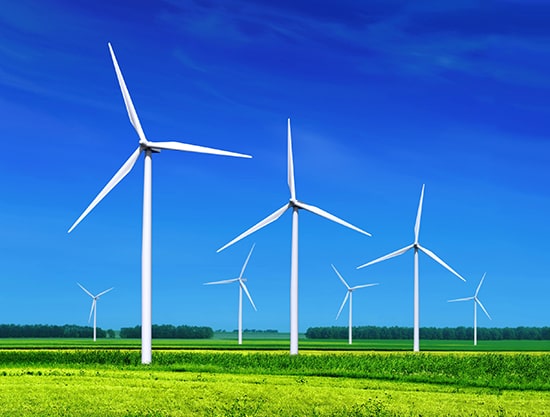
Globally, there is a clear transition to cleaner energy and fuels. A definite megatrend, it’s an opportunity for industries such as steel with conventionally large-scale dependence on fossil fuels, to relook at their energy mix and ensure energy sufficiency for the future.
As global energy prices are spiralling and the demand for energy continues to grow with population growth, and aspirations for a better quality of life, it is essential that businesses future-proof themselves against the availability and affordability of sustainable energy to conduct their operations.
At JSW Steel, we have adopted state-of-the-art and energy-efficient systems and practices across our operations. This helps us continuously conserve resources and energy, and consequently, keep our input costs under control. Further, as part of our long-term plan, we are evaluating the building of adequate infrastructure to produce green electricity as a part of our overall energy portfolio. Our energy policy predominantly straddles efficient energy use, implementation of innovative projects to reduce energy demand and proactively embracing renewable energy (RE).
*equivalent to 6.37 GCal
| Interventions | Outcomes | ||||||||||
|---|---|---|---|---|---|---|---|---|---|---|---|
| Vijayanagar | |||||||||||
| Installation of waste gas recovery and waste gas recirculation system at sinter plant 4 | Fuel saving up to 4.5kg/t sinter | ||||||||||
| Installation of coke oven dry quenching power plant | Power generation of 65 MW | ||||||||||
| Better demand and supply management | Reduction in oxygen venting losses | ||||||||||
| Up-gradation of Energy Management Centre (EMC) control room and servers | Better monitoring of gas network signals | ||||||||||
| Steam line interconnection between iron zone and steel zone | Optimum utilisation and saving of 2.5 tph | ||||||||||
| Salem | |||||||||||
| Increasing reliability of Coke oven plant chimney damper | Increase in steam generation from WHR Boiler from 136 tph to 142 tph (energy saving of 42,100 GCal per annum) | ||||||||||
| Installation of VFD in 75kW pump in Intake water pump house | Optimisation of power consumption and resultant saving of 25,488 kWh per month | ||||||||||
| Subsidiary | FY 2020-21 | FY 2019-20 | FY 2020-21 | FY 2019-20 | |||||||
|---|---|---|---|---|---|---|---|---|---|---|---|
| JSW SCPL | 3932.12 | 3914.51 | 1.57 | 1.56 | |||||||
| JSW ARCL | 42320.00 | 45908.90 | 44.94 | 45.40 | |||||||
| JSW Industrial Gases | 2455.87 | 2631.80 | 1983.53* | 1951.75 | |||||||
| Energy consumption of JSW Mines and JSW Salav | |||||||||||
| JSW Mines | 193.80 | 127.00 | 0.03 | 0.03 | |||||||
| JSW Salav | 6989.85 | 8056.02 | 16.41 | 14.16 | |||||||
*GJ/million Nm3
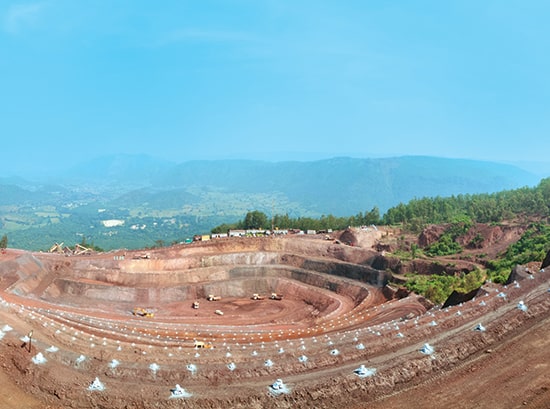
With burgeoning population and increasing urbanisation, demand for resources has significantly increased worldwide. The competition between industries and nations are expected to increase, and in this context, prudent sourcing, long-term raw material security and efficient utilisation assume priority.
At JSW Steel, we have institutionalised processes that maximise the utilisation of natural resources that we rely on. This includes interventions such as coal blending, and minimal wastage of the iron ore we mine and transport. In addition, we are stepping up our iron ore beneficiation from owned mines to enable better resource efficiency.
To control losses during storage, we have ensured covered shedding where critical raw material inventory is stocked. Our resource conservation policy is anchored on considerate sourcing of materials, efficient use, and innovative projects to reduce the demand for raw materials.
| Interventions | Outcomes | ||||||||||
|---|---|---|---|---|---|---|---|---|---|---|---|
| Vijayanagar | |||||||||||
| Utilisation of dry pit slag as a coarse aggregate | Replaces the natural resource thereby avoiding the depletion of reserves | ||||||||||
| Dolvi | |||||||||||
| Acquisition of mines and procurement of Odisha fines only from JSW owned mines | This will eliminate the dependency on third parties for supply of key raw material for plant operations | ||||||||||
| The capacity of covered Jetty Yard-A has been increased from 73,000 tonnes to 1.25 lakh tonnes | There will be less ingress of moisture in coal during monsoon which will result in increased production efficiency | ||||||||||
| Covered new Jetty Yard-B for Phase-2 having capacity around 2.7 lakh tonnes | There will be less ingress of moisture in iron ore fines during monsoon which will result in increased production efficiency | ||||||||||
Note: Specific consumption of iron ore and fluxes has increased due to usage of lower quality raw material and disruptions in production pertaining to the pandemic
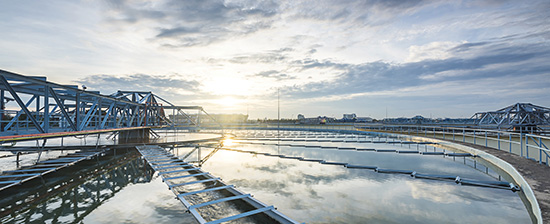
The requirement for freshwater is rising across communities and industries, and there is a global focus on achieving water security. Innovative ways of sourcing and managing water are being sought across the board, to manage persistent and long-term challenges.
At JSW Steel, water continues to be a material concern as we have a strong dependence on the availability of freshwater. Some of our plants function in water-stressed regions, and it’s an imperative that we continue to push the envelope in building long-term water security for our operations and communities. Careful sourcing and innovative and efficient use of water form part of our water stewardship approach. All our plants have a water management plan in place curated with foresight and meticulous planning.
Several water conservation measures have been initiated at both plant and community levels, which help us manage our available and sourced water efficiently, including conducting aquifer mapping and hydrogeological studies.
*Considering the crude steel production process only
| Interventions | Outcomes | ||||||||||
|---|---|---|---|---|---|---|---|---|---|---|---|
| Vijayanagar | |||||||||||
| Increased utilisation of recycled water | Capacity utilisation of RO plants was increased from 86% in FY 2019-20 to 92% in FY 2020-21. | ||||||||||
| Revamping the firefighting line of Lime-calcination Plant (LCP) | 600m3/day of fresh water is saved | ||||||||||
| Salem | |||||||||||
| Replaced Ultra Filter (UF) model that avoids water while backwashing |
|
||||||||||
| Periodically review of water consumption by the Plant Water Conservation Committee | 100 m3/day of water saved by small improvement projects. | ||||||||||
| Dolvi | |||||||||||
| Laying of 23 km new pipeline for freshwater from Nagothane to Dolvi | The availability of fresh water is ensured for both Phase-1 and Phase-2 | ||||||||||
| Mines | |||||||||||
| Use of process water from plant to save fresh water;` 16 crore project under implementation | Net water savings of 6,000 m3/day | ||||||||||
| Rainwater harvesting through R&R structures | 10,000 m3 water conserved every year | ||||||||||
| Subsidiary | FY 2020-21 | FY 2019-20 | FY 2020-21 | FY 2019-20 | |||||||
|---|---|---|---|---|---|---|---|---|---|---|---|
| JSW SCPL | 1890.17 | 1484.29 | 0.76 | 0.59 | |||||||
| JSW ARCL | 2785.55 | 2579.95 | 2.96 | 2.55 | |||||||
| JSW Industrial Gases | 731.90 | 929.43 | 591.13* | 689.27 | |||||||
| Water consumption of JSW Mines and JSW Salav | |||||||||||
| JSW Mines | 180.72 | 132.09 | 0.03 | 0.03 | |||||||
| JSW Salav | 2785.22 | 2358.30 | 6.54 | 4.15 | |||||||
*m3/million Nm3
**excluding townships
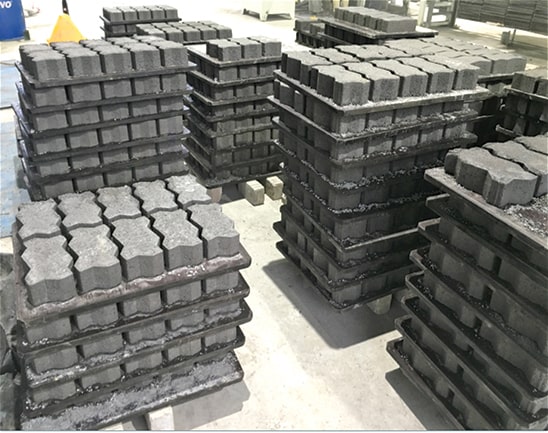
Every year, over 11 billion tonnes of solid waste is collected globally, and its disposal and management pose significant challenges. Lack of proper treatment of waste causes several spillover effects, including organic decay of matter that contribute to GHG emissions, and non-decay of single-use plastics that clog the natural ecosystem.
In response to this large-scale issue, economies and organisations are increasingly viewing circularity as a plausible solution, departing from the traditionally linear use-and-dispose paradigm.
At JSW Steel, we generate hazardous and nonhazardous waste in different forms and quantities as by-products during steelmaking. To manage these, we have an integrated strategy towards efficient waste management which takes into account environmental impact, social effects and commercial viability. We follow a widely accepted ‘waste management hierarchy’, which follows a 'prevent-reuse-recycle-dispose' value chain. We are also a member of the Unplastic Collective.
At JSW Steel, we follow a ‘Zero Waste to Landfill’ model to manage our waste. We achieve this with consistent monitoring and optimisation of resource usage, and finding alternative utilities for the waste material we generate. For example, we innovated and patented the manufacturing of paver blocks from steelmaking slag, thereby offsetting the need for withdrawing naturally occurring coarse and fine aggregates. Similarly, recognising the physical similarity of granulated blast furnace slag (GBS) to river sand, we were able to gainfully recycle the GBS generated in our plant to make commercial grade construction material for building roads and other infrastructure enabling us to conserve precious natural resouces.

In continuation to the ethos of effective waste management driven by the Company and our ongoing initiatives of making a plastic-free environment, Steel Melting Shop 3 (SMS-3) at JSW Steel Vijayanagar Works has developed and commissioned a first-of-its-kind technology — EAF Plastic Injection System. This technology helps in injecting plastic waste and residue into the Electric Arc Furnace (EAF).
The commissioning of this system will mean controlled plastic-dumping in open grounds and diminish coke fines' consumption in EAF. As of March 2021, plastic consumption was around 1.2 tonnes/day which replaces equivalent amount of coke fine injection.
With growing awareness and sensitivity around the cause of the environment, this novel intervention may prove to be a model project for other JSW Group locations to emulate in the future
| Interventions | Outcomes | ||||||||||
|---|---|---|---|---|---|---|---|---|---|---|---|
| Vijayanagar | |||||||||||
| Installation and commissioning of the plastic injection in SMS 3 | 3 tonnes of plastic per day can be recycled through SMS 3 thereby reducing fuel source and avoiding plastic disposal | ||||||||||
| Utilisation of steel slag in making paver blocks | Replaces sourcing of natural aggregate and also avoids the disposal of Steel slag. New design mix has been developed to utilise 100% EAF slag component in manufacturing of paver and concrete bricks | ||||||||||
| Utilisation of BF slag as replacement of river sand | During FY 2020-21, 5 lakh tonnes of BF slag sold as fine aggregates in civil construction replacing the natural river sand | ||||||||||
| Dolvi | |||||||||||
| New vertical filter press installed at Sponge Iron Plant (SIP) to handle SIP sludge | Prevents losses during monsoon due to open storage and provides for consistent use throughout the year due to removal of moisture. Controls fugitive dust emissions during summer | ||||||||||
| New vertical filter press for de-oiling and de-watering facility installed at Hot Strip Mill (HSM) to handle Compact Strip Plant (CSP) sludge | Enables reutilisation of CSP sludge of 18 tonne/day in sinter plants | ||||||||||
| Lab scale trials for utilisation of EAF slag in road applications by Central Road Research Institute (CRRI) | The results enable field testing of EAF slag as aggregates in both road and concrete applications | ||||||||||
| Salem | |||||||||||
| Maximising the SMS crushed slag utilisation to paver making facility | Usage of about 1,100 tonnes (for 6 months) SMS crushed slag to produce about 3.6 lakh paver blocks | ||||||||||
| Control on ash generation in coal boiler | Reduction (y-o-y) of ash generation of about 2,400 tonnes | ||||||||||
| Low grade ore is put to use (instead of 45 % plus, 35% plus Fe material is used) | Conserving mineral resources. All recently approved mining plans by Indian Bureau of Mines (IBM) have this grade mentioned | ||||||||||
| Subsidiary | FY 2020-21 | FY 2019-20 | FY 2020-21 | FY 2019-20 | |||||||
|---|---|---|---|---|---|---|---|---|---|---|---|
| JSW SCPL | 16.14 | 15.40 | 10.72 | 36.67 | |||||||
| JSW ARCL | 37.38 | 32.72 | 0.059 | 0.082 | |||||||
| JSW Industrial Gases | 13* | - | 0.002 | 0.001 | |||||||
| Waste at JSW Mines and JSW Salav | |||||||||||
| JSW Mines | 2493.07 | 2435.15 | 0.022 | 0.067 | |||||||
| JSW Salav | 0.25 | 0.17 | 0.048 | 0.246 | |||||||
*in kg
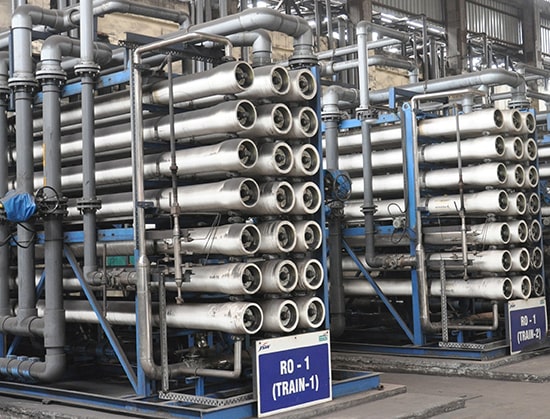
Industrial waste and effluents, along with domestic sewage, can threaten natural ecosystems and communities if disposed without treatment. Globally, about 80% of wastewater flows back into the ecosystem without being treated or reused, contributing to a situation where around 1.8 billion people do not have clean drinking water. There is thus a significant need for the industry to consciously manage their effluents and restrict discharge into natural water bodies.
At JSW Steel, we continue to uphold our Zero Liquid Discharge (ZLD) status across all our steel manufacturing locations. Following the ZLD process, we have, achieved cost savings, mitigated water acquisition risks and have achieved overall better environmental performance and compliance. Our onsite Sewage Treatment Plants (STPs) manage sewage from domestic use, and direct the treated water towards irrigation purposes.

Water is a critical resource necessary for conducting various steelmaking operations. JSW Steel maintains a strong oversight on the water being used within its plants and surroundings, including its withdrawal and treatment.
JSW Steel Vijayanagar Works also augmented the capacity utilisation of its RO plant by drawing and treating water from the nearby sewage treatment plants (STPs). Further, to increase the quality of the treated water, a Membrane Bio-Reactor (MBR) system was added to the STP, where the water was treated first before entering the RO plant. The treated water could then be utilised in Cold Rolling Mills (CRMs) and various other plant processes.
The technology we are using at Vijayanagar, unlike most others, is enabling the generation of water that can be put to diverse uses, including in critical process applications. The efficiency of the present system has encouraged us to expand the project, configure additional sources of low-grade sewage water and increase water availability for industrial use within the JSW Steel Vijayanagar complex, thus minimising our dependency on external freshwater sources.
The technology of MBR and RO are both relatively straightforward and, as such, the approach adopted at Vijayanagar can in all likelihood be replicated at any steel plant which has local municipal sewage treatment plants close by. With this level of scaleability, we are already looking to replicate this technology at our Dolvi plant.
| Interventions | Outcomes | ||||||||||
|---|---|---|---|---|---|---|---|---|---|---|---|
| Vijayanagar | |||||||||||
| Utilisation of SMS 3 blowdown water in DRI for processes | 500 m3/day fresh water is avoided | ||||||||||
| Utilisation of sewage water from Sun rise valley township in the processes through advanced treatment technologies | 900 m3/day of fresh water is avoided | ||||||||||
| Utilisation of sewage water from Hill side township in the processes through advanced treatment technologies | 1,500 m3/day of fresh water is avoided | ||||||||||
| Neutralisation of SMS 2 GCP circuit water by CPL-2 waste water | Improves the quality of water | ||||||||||
| Mines | |||||||||||
| Zero waste water generation across all mines | Waste water is not generated at mines as mines are devoid of wet processing | ||||||||||
| Waste water will be used in place of ground water | 6,000 m3 waste water from steel plant will be reused /day in dust suppression at mines | ||||||||||
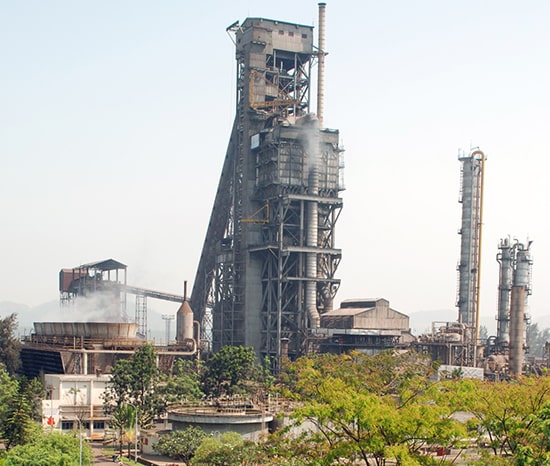
Particulate Matter (PM), SOx and NOx are pollutants that can have severely detrimental effects on local ecosystems, air quality, habitats, agriculture, and human and animal health.
At JSW Steel, we are committed to preventing, abating and mitigating our emissions to air and have dedicated policies addressing point (stack) and non-point (fugitive) source emissions. In order to contain the emissions, we have put in place systems, policies and interventions to maintain our emissions under the statutory limits.
To achieve a better compliance and adhering to our environmental commitment, we installed the MEROS (Maximised Emission Reduction of Sintering) system to treat process gases of Sinter Plant 4 at Vijayanagar Works. The installation of this state-of-the-art, globally recognised system helps us maintain emissions at less than 10 mg/Nm3.
*from process stacks
Note: We acknowledge the increase in our SOx and NOx emissions in FY 2020-21, compared to the preceding year. While these are under permissible limits, we are constantly working towards reducing these emissions across our operations.
| Interventions | Outcomes | ||||||||||
|---|---|---|---|---|---|---|---|---|---|---|---|
| Vijayanagar | |||||||||||
| A bag filter of 1,50,000 m3/h commissioned at Raw Material Handling System (RMHS) JH14-15 | Work zone emission of less than 2,000 mg/m3 achieved in the respective junction house | ||||||||||
| Yard sprinklers installed at pellet plant stockyard | Reduction of fugitive emissions from the yard | ||||||||||
| A bag filter of 2,50,000 m3/h commissioned at BF2 – (Sinter Fines Conveyor building de-dusting system) | Reduction in work zone emissions of BF2 | ||||||||||
| Salem | |||||||||||
| Installation of mobile de-dusting system in BF pit scale cutting | Reduction of fugitive emissions from 12,500 µg/m3 to 3,200 µg/m3 | ||||||||||
| Provision of concrete road of about 1.5 KM to control fugitive emission | Reduction of fugitive emissions from 7,000 µg/m3 to 950 µg/m3 | ||||||||||
| Water sprinklers system in raw material movement road to control fugitive emission due to vehicular movement | Reduction of fugitive emissions from 8,500 µg/m3 to 2,200 µg/m3 | ||||||||||
| Air pollution control measures installation in slag crushing unit | Reduction of fugitive emissions from 3,750 µg/m3 to 740 µg/m3 | ||||||||||
| Coke cutter de-dusting system installation | Reduction of fugitive emissions from 14,000 µg/m3 to 1,800 µg/m3 | ||||||||||
| Dolvi | |||||||||||
| Upgrading of Gas Cleaning Plant (GCP) of Steel Melting Shop (SMS) to achieve PM emissions <10 mg/Nm3 from stack | Reduction of emissions from secondary source. Improved source emissions from stack beyond EU Norms | ||||||||||
| Mines | |||||||||||
| Pipe conveyor for reducing emissions | 80% emissions reduction | ||||||||||
| Subsidiary | FY 2020-21 | FY 2019-20 | FY 2020-21 | FY 2019-20 | FY 2020-21 | FY 2019-20 | |||||
|---|---|---|---|---|---|---|---|---|---|---|---|
| JSW SCPL | 0.066 | 0.046 | 0.064 | 0.064 | 0.037 | 0.032 | |||||
| JSW ARCL | 0.369 | 0.240 | 1.578 | 0.567 | 0.768 | 0.699 | |||||
| JSW Industrial Gases (per million Nm3) | 0.016 | 0.012 | 0.279 | 0.280 | 0.359 | 0.318 | |||||
| Air emissions at JSW Mines and JSW Salav | |||||||||||
| JSW Mines | 5.56E-05 | 6.58E-05 | 6.32E-05 | 2.26E-04 | 8.90E-04 | 5.44E-04 | |||||
| JSW Salav | 0.002 | 0.002 | 0.0185 | 0.013 | 0.0738 | 0.068 | |||||

Biodiversity is increasingly being challenged on land and water, through deforestation and habitat loss, overexploitation, the presence of invasive species, pollution and the impact of climate change. The preservation and restoration of biodiversity are critical for maintaining a balanced ecosystem.
JSW Steel recognises biodiversity as a core focus area. Thus, we are aligned to the National Biodiversity Targets, and take a risk-based approach for making biodiversity a key decision making consideration. We are also committed to not operating in World Heritage areas and IUCN Category I-IV protected areas.
Together with the International Union for Conservation of Nature (IUCN), we continue to undertake site-specific assessment of biodiversity impact. We are also a Working Group (WG) and founding member of the India Business and Biodiversity Initiative (IBBI) Chapter of CII-CESD.
We have taken proactive measures to analyse the impact of our operations on biodiversity in our impact zones and have taken scalable measures for its preservation in various forms. In areas where biodiversity loss has led to livelihood loss, we have stepped in and worked with the communities to restore the natural cover. For example, we helped scientifically manage the mangrove ecosystem near our Dolvi facility, thus preventing saltwater inundation of farmlands.
| Interventions | Outcomes | ||||||||||
|---|---|---|---|---|---|---|---|---|---|---|---|
| Vijayanagar | |||||||||||
| Planted 20,000 trees/shrubs for the FY 2020-21 | Improvement in overall biodiversity index | ||||||||||
| Salem | |||||||||||
| 18,130 trees across various species planted | Carbon offset about ~3,500 tonnes/annum | ||||||||||
| Rain water collection system expansion from 7,000 m3 to 15,000 m3 (inside the plant premises) | Additional rain water collection and recharge earth and reuse in processes | ||||||||||
| Dolvi | |||||||||||
| 1.5 lakh mangroves planted | Enriches local biodiversity | ||||||||||
| Mines | |||||||||||
| Wildlife management, providing camera traps, patrolling vehicles and water tankers to forest department | Supports overall biodiversity management and conservation efforts | ||||||||||
| Plantation of 1,00,000 trees (Agave over other species) undertaken in FY 2020-21 | Helped save 8-10 times on water consumption; and 8-10% productivity over other species planted | ||||||||||
We were among the firsts to sign up and commit to the Indian Business and Biodiversity Initiative (IBBI), an initiative by the Confederation of Indian Industry (CII) in partnership with India’s Ministry of Environment, Forest & Climate Change. In compliance with the IBBI declaration, we have mapped the biodiversity interfaces with business operations designated as biodiversity champion and have implemented schemes for enhancing awareness on biodiversity within the organisation. We also continue our biennial disclosure under the 10 points prescribed by the IBBI.
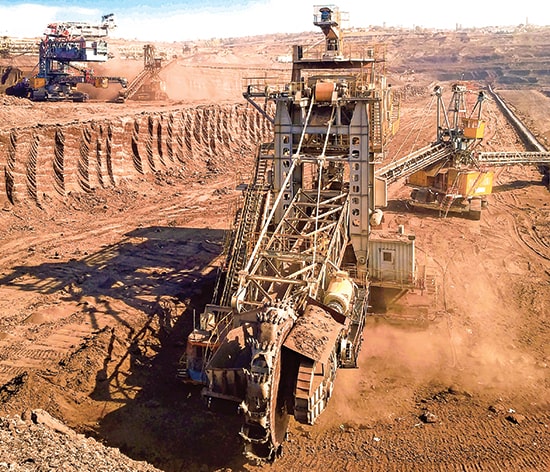
Mining is a natural capital intensive activity that poses significant environmental risks, if not managed scientifically. Various aspects, such as tailings, energy and water consumption, biodiversity and structural stability are some of the aspects that are considered critical in mining operations.
We currently operate 13 iron ore mines across Karnataka and Odisha, to support our raw material requirements. We ensure that sustainable mining with minimal environmental and social impact is practised across these operations.
At JSW Steel, we adhere to the regulations as prescribed by the Government under the Forest Conservation Act, 1980 and the Compensatory Afforestation Fund Act, 2014 along with our mine closure plans.
We also adhere to the guidelines as per the National Rehabilitation and Resettlement policy, 2007.
Read More| Interventions | Outcomes |
|---|---|
| Wildlife management plans put in place | Documenting and conserving biodiversity |
| Comprehensive mines restoration plan (R&R) for all 6 mines in Karnataka implemented with water conservation structures | Ecological stability of mines |
| Preparation of soil moisture conservation plans | Conservation of flora and fauna |
| Artificial, biodegradable bird nests supply to the forest department | Restoration of avifauna |
| Mine closure plan with thematic conservations | Ecologically sensitive and socially relevant use of depleted mines with native diversity park, medicinal plants, wetlands etc. |
| Afforestation with native species | Improved green belt and used Miyawaki plantation method to achieve tree density of 2,800 ind./hectare and shrub density above 3500 ind./hectare. Bamboo plantation was another key initiative to build biodiversity and increase carbon sequestration. |

Steelmaking is a heavy manufacturing activity that involves several processes. During our operations across the value chain, there is potential for the generation of noise, odours, smoke, fumes, dust, etc., that can disturb the local communities in and around the plant premises.
At JSW Steel, we maintain an identificationprevention-feedback–monitoring strategy to tackle these stakeholder-critical issues.
| Interventions | Outcomes | ||||||||||
|---|---|---|---|---|---|---|---|---|---|---|---|
| Vijayanagar | |||||||||||
| Installation of polymer lined idlers as a replacement of metallic idlers for pipe conveyor over a stretch of 1.5 km. | Ambient noise reduction | ||||||||||
| Mines | |||||||||||
| Employment to local people | Creation of multiple job opportunities for local communities | ||||||||||
| CSR interventions worth `6 crore | Improving livelihood and overall upliftment of communities | ||||||||||
| Use of waste water for dust suppression | 6,000 m3/ day water that can be used for local farming purposes | ||||||||||